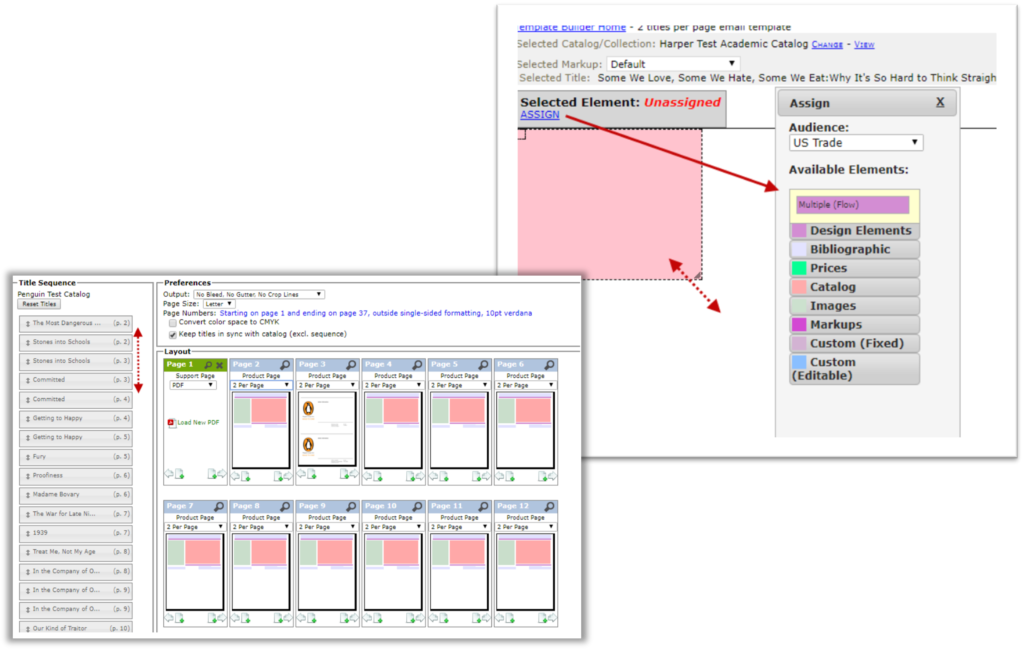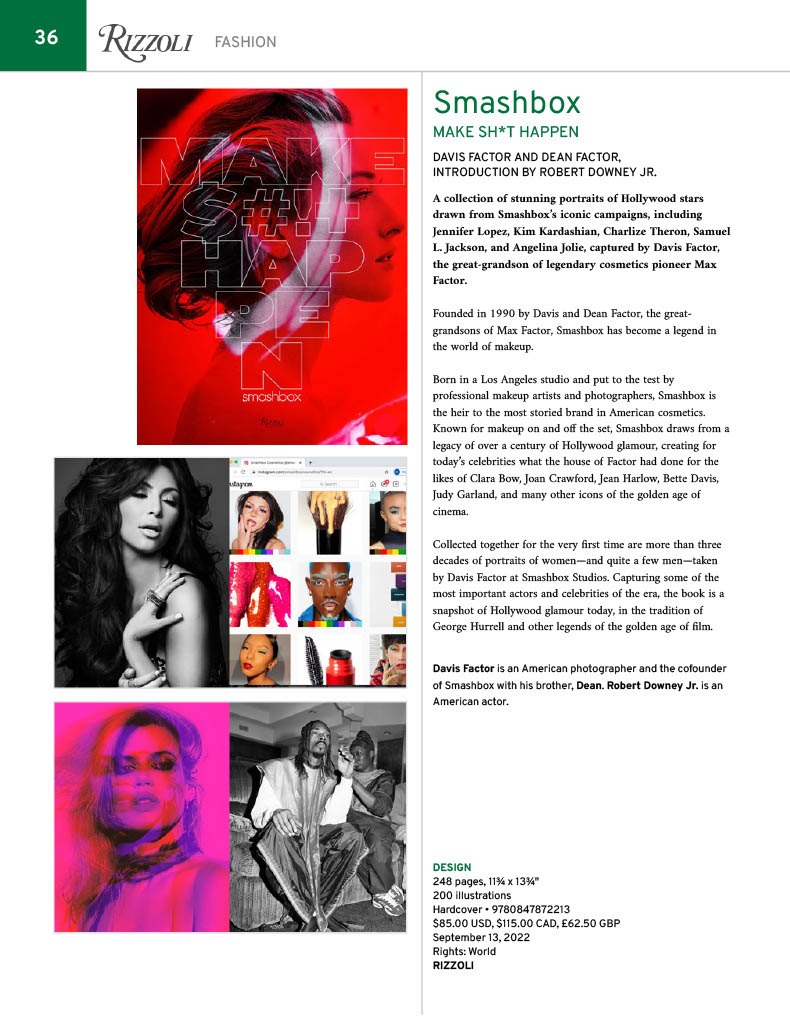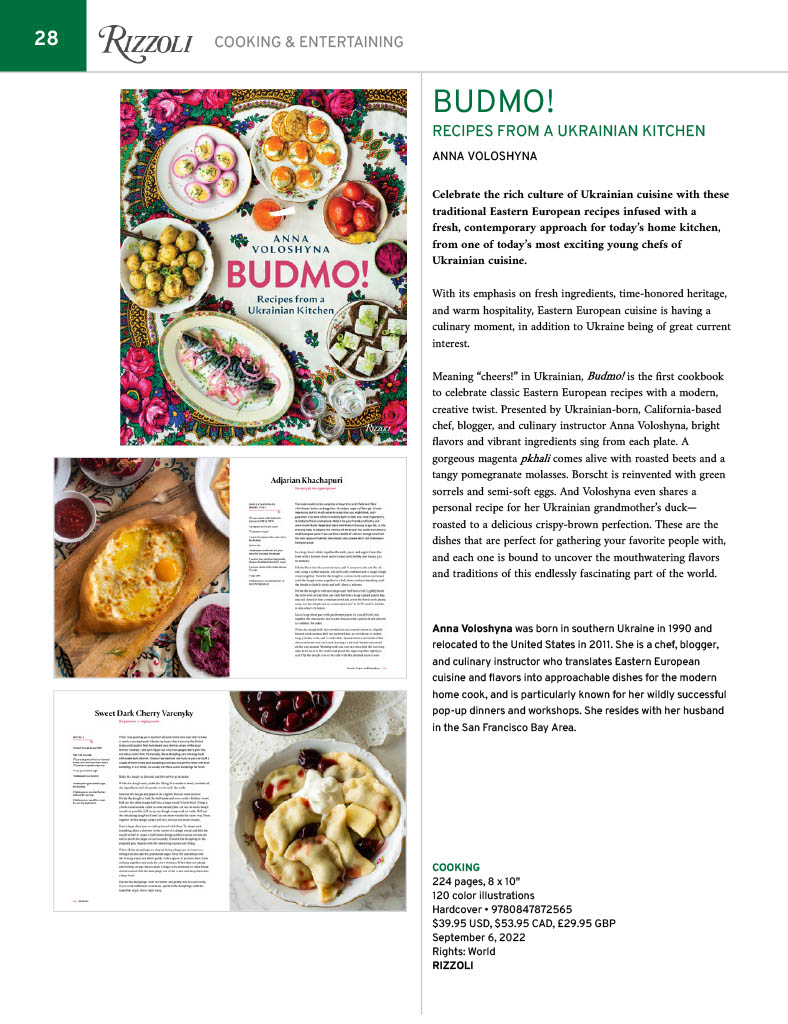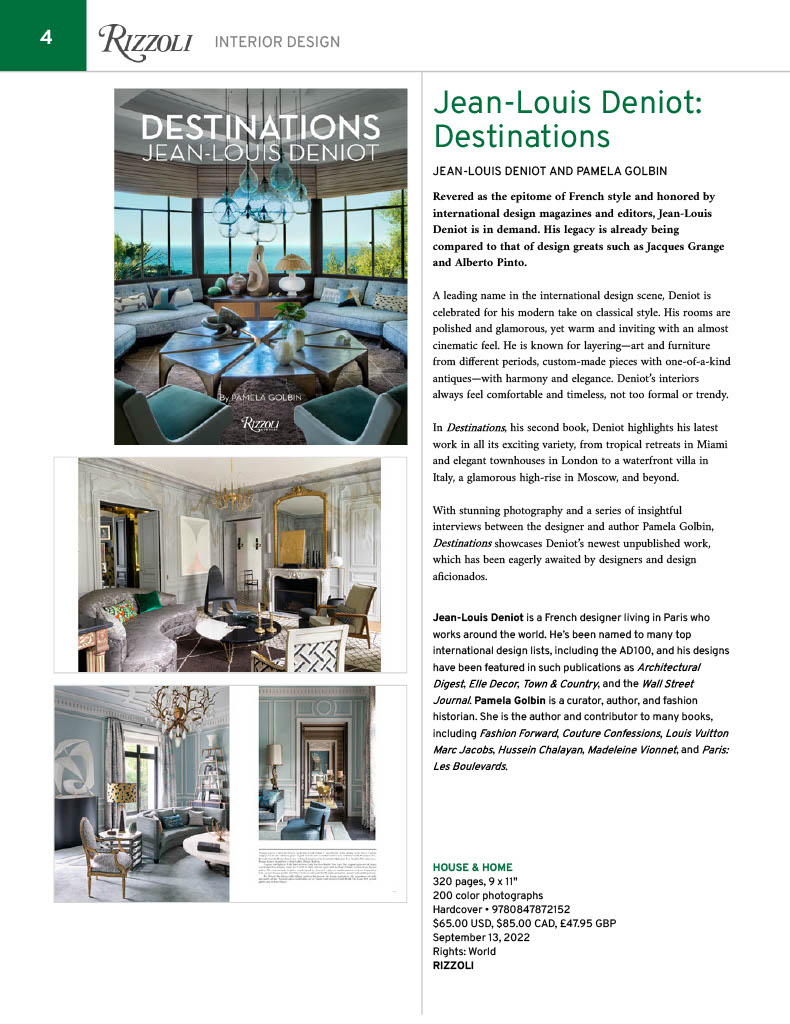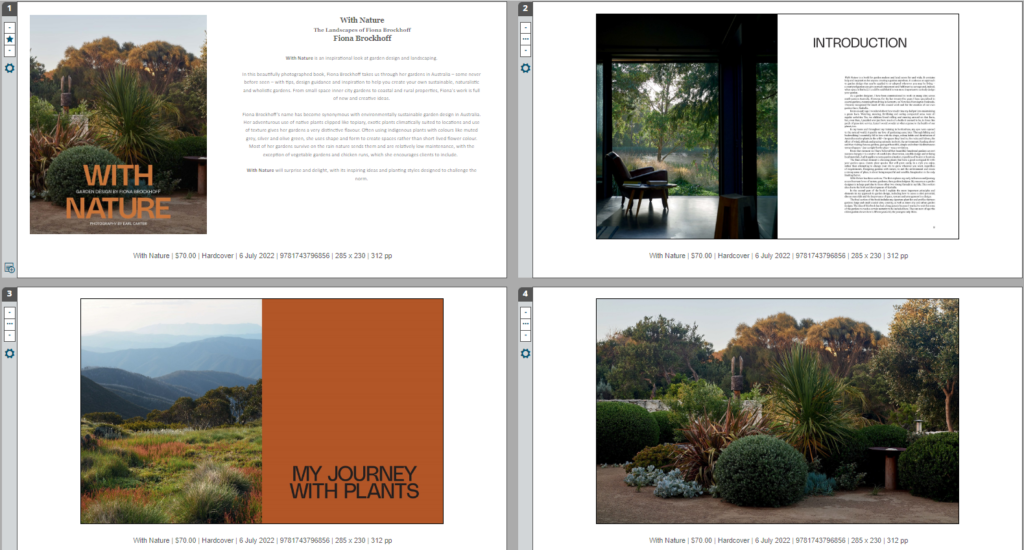
In February 2021, the Edelweiss team received an inquiry from the publisher Rizzoli about the possibility of customizing an exported PDF to meet their catalog specifications. They were looking to create a print-ready sales catalog using Edelweiss, one which would be built from the title data that they were already sending us as part of managing catalogs on the site. Across the creation of their print and digital catalogs, the Rizzoli team was doing a decent amount of double work and they hoped to cut down on the repetition.
The timing of Rizzoli's question was just right. At this point, we were just beginning to develop a tool to replace Edelweiss Document Builder. This was an older Edelweiss module that did generate custom exports for publishers but whose user-interface was clunky and difficult to navigate.
Rizzoli would go on to join our quest to build a better Document Builder 2.0 by becoming one of our publisher beta testers for the developing tool. This was a group composed of different publishing houses with different needs for the module that provided feedback and identified fixes as it took shape. A year and a half later, that tool is moving out of testing and is now available as an add-on for all publishers!
We’ve named the result of this collaborative development process Edelweiss Designer. It is a powerful yet user-friendly tool for publishers to design beautiful, fully custom exports via their own user-created templates. Our beta-testers have used Designer to create templates for catalogs as well as sell sheets, order forms, sales presentations, and more!
Designer users can export their creations to PDFs, print-ready or otherwise. They can also generate a direct and universally accessible link for others to see their documents, rendering materials available to viewers without them needing to login.
And, as Rizzoli originally hoped, all Designer templates populate using the title data feeds that publishers with catalog subscriptions already send Edelweiss. This way, materials are updated in real time and always stay current—any changes to metadata that a publisher sends into Edelweiss will automatically reflect in Designer, too.
Our collaboration with Rizzoli recently had its biggest payoff, when the publisher went to print with its Fall 2022 catalog. The gorgeous publication was fully created on Designer and, to Edelweiss CEO John Rubin, proof that Designer was powerful enough to handle any project thrown at it.
"Rizzoli is an amazing art book publisher and we felt like, if we could make it work for an art book publisher, we could make something useful for all."
In honor of the launch of Edelweiss Designer, we spoke with Linda Pricci at Rizzoli about collaborating on the development of the tool, the process of creating catalogs at Rizzoli, and the major benefits she has seen using Designer so far.

Linda Pricci
What is your role at Rizzoli?
Marketing Manager, Online and Creative Services. In addition to designing and project managing Rizzoli’s sales catalog, I also am in charge of all social media and online marketing.
As a publisher, Rizzoli is known for books that are heavily illustrated and full of beautiful photography. How does this publishing program influence the type of catalogs that you make?
Images are very important in our sales catalog. That is why we designed our catalog in InDesign—to have full creative control over the layout. But now that Edelweiss Designer can mimic our layout, we have access to automatic data feeds that makes populating the catalog template and incorporating updates significantly easier.
What have been some of the most challenging parts of putting together a Rizzoli catalog?
The constant updating of information. The books are still in flux at this point so titles, subtitles, covers, and specs are always changing until the last minute.
What was the experience of testing and giving feedback on Designer like? What were some of the changes you requested and why?
As a beta user there was a lot of experimenting and discussion about what works and what doesn’t work—both in design and functionality. John was very receptive to my ideas, which made me feel like a part of the team bringing this to life. I had a lot of feedback in terms of page layout and how to feed specific types of data, like image captions or custom rights information. These ideas and fixes were implemented very quickly which allowed me to keep moving forward.
How has using Designer changed your process creating catalogs? What do you see as the major benefits of using Designer?
The major benefit is the automatic data feed. Previously we’d manually update the print catalog with changes, then hand those changes to a marketing assistant who input them into the system. Having the changes go right into the system instead means everything is updated simultaneously.
Could you share some upcoming projects from Rizzoli that you are excited about?
This Fall we have a great list of titles from celebrated interior designers, renowned fashion icons, cooking and entertaining experts, talented artists, and more. You can find them in our catalog here!


